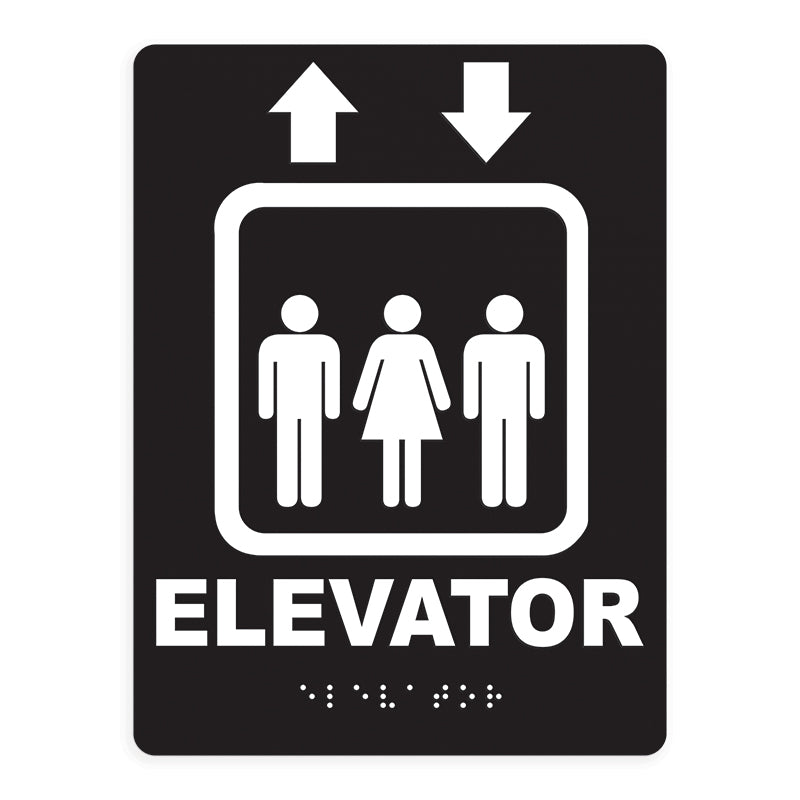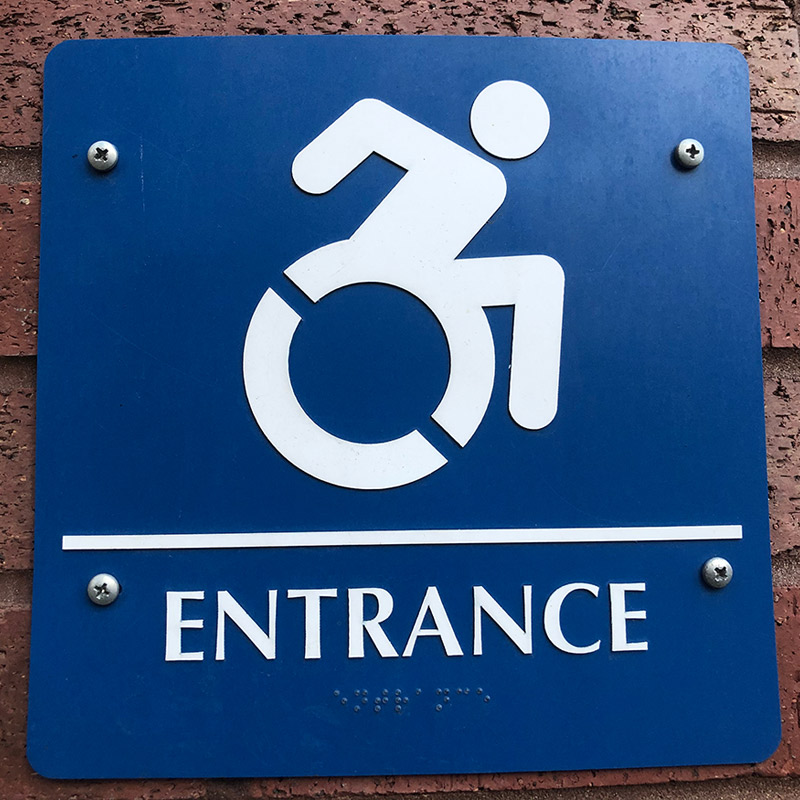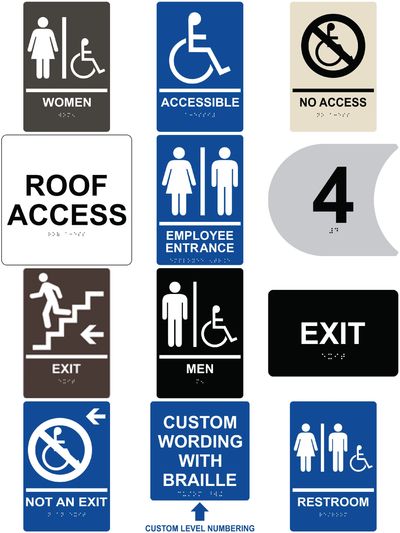ADA Signs: Necessary Tools for Inclusive Settings
ADA Signs: Necessary Tools for Inclusive Settings
Blog Article
Exploring the Secret Features of ADA Signs for Enhanced Ease Of Access
In the realm of access, ADA indicators serve as quiet yet powerful allies, making sure that spaces are navigable and comprehensive for individuals with handicaps. By integrating Braille and responsive components, these signs break barriers for the visually damaged, while high-contrast color plans and legible font styles provide to varied visual needs.
Significance of ADA Compliance
Ensuring compliance with the Americans with Disabilities Act (ADA) is vital for fostering inclusivity and equal gain access to in public rooms and work environments. The ADA, established in 1990, mandates that all public facilities, companies, and transport solutions accommodate people with handicaps, ensuring they delight in the exact same rights and chances as others. Conformity with ADA criteria not just meets legal responsibilities yet additionally boosts a company's credibility by showing its dedication to variety and inclusivity.
One of the key facets of ADA conformity is the application of obtainable signs. ADA indicators are created to make sure that individuals with disabilities can easily browse with rooms and structures.
Additionally, adhering to ADA laws can alleviate the danger of lawful consequences and prospective penalties. Organizations that fail to conform with ADA guidelines might deal with suits or fines, which can be both economically troublesome and destructive to their public picture. Thus, ADA conformity is integral to promoting an equitable setting for everybody.
Braille and Tactile Components
The consolidation of Braille and responsive aspects right into ADA signs embodies the concepts of availability and inclusivity. These functions are crucial for people who are blind or aesthetically impaired, enabling them to navigate public rooms with higher freedom and confidence. Braille, a tactile writing system, is essential in giving written info in a style that can be conveniently viewed via touch. It is generally positioned below the matching message on signage to make sure that people can access the information without visual aid.
Tactile elements extend beyond Braille and include raised personalities and symbols. These components are developed to be discernible by touch, allowing people to determine room numbers, restrooms, departures, and various other critical locations. The ADA establishes certain standards pertaining to the dimension, spacing, and positioning of these responsive components to maximize readability and make sure consistency throughout various environments.

High-Contrast Color Pattern
High-contrast color pattern play a critical role in boosting the exposure and readability of ADA signs for individuals with aesthetic impairments. These schemes are vital as they optimize the difference in light reflectance in between message and history, making sure that indicators are quickly discernible, also from a range. The Americans with Disabilities Act (ADA) mandates using details shade contrasts to accommodate those with limited vision, making it a critical element of conformity.
The effectiveness of high-contrast colors hinges on their capacity to stand apart in numerous lighting conditions, including dimly lit atmospheres and locations with glare. Usually, dark text on a light background or light text on a dark history is employed to attain optimal contrast. For circumstances, black text on a white or yellow background provides a stark aesthetic distinction that aids in quick recognition and comprehension.

Legible Fonts and Text Dimension
When taking into consideration the useful site design of ADA signs, the selection of legible fonts and suitable text size can not be overemphasized. The Americans with Disabilities Act (ADA) mandates that typefaces need to be not italic and sans-serif, oblique, manuscript, very attractive, or of unusual form.
The size of the message likewise plays a critical role in ease of access. According to ADA guidelines, the minimal text elevation must be 5/8 inch, and it should boost proportionally with seeing range. This is specifically vital in public areas where signage needs to be reviewed swiftly and accurately. Consistency in text dimension contributes to a natural visual experience, assisting people in navigating environments successfully.
Moreover, spacing between lines and letters is integral to readability. Sufficient spacing prevents characters from showing up crowded, enhancing readability. By adhering to these criteria, designers can dramatically enhance accessibility, making sure that signage offers its intended function for all people, no matter their visual abilities.
Reliable Placement Methods
Strategic placement of ADA signage is necessary for making the most of ease of access and guaranteeing compliance with lawful criteria. ADA standards state that indications ought to be mounted at an elevation between 48 to 60 inches from the ground to ensure they are within the line of view for both standing and seated people.
Furthermore, signs have to be put surrounding to the lock side of doors to enable easy recognition before access. Consistency in indicator positioning throughout a facility boosts predictability, minimizing confusion and enhancing total individual experience.

Verdict
ADA signs play a crucial role in promoting ease of access by incorporating attributes that attend to the demands of individuals with specials needs. Incorporating Braille and responsive components makes certain crucial info comes to the visually damaged, while high-contrast shade plans and readable sans-serif typefaces boost visibility throughout numerous lights conditions. Effective placement techniques, such as proper mounting heights and calculated places, better promote navigating. These elements collectively cultivate an inclusive atmosphere, highlighting the value of ADA compliance in guaranteeing equal gain access to for all.
In the realm of accessibility, ADA indicators serve as silent yet effective allies, making sure that areas are inclusive and accessible for individuals with impairments. The ADA, enacted in 1990, mandates that all public centers, companies, and transport solutions accommodate people with specials needs, ensuring they delight in my sources the exact same legal rights and opportunities as others. ADA Signs. ADA indicators are created to guarantee that click for more individuals with handicaps can conveniently browse with spaces and structures. ADA guidelines stipulate that indicators ought to be placed at an elevation between 48 to 60 inches from the ground to guarantee they are within the line of sight for both standing and seated people.ADA indications play a vital duty in promoting accessibility by integrating features that deal with the needs of individuals with disabilities
Report this page